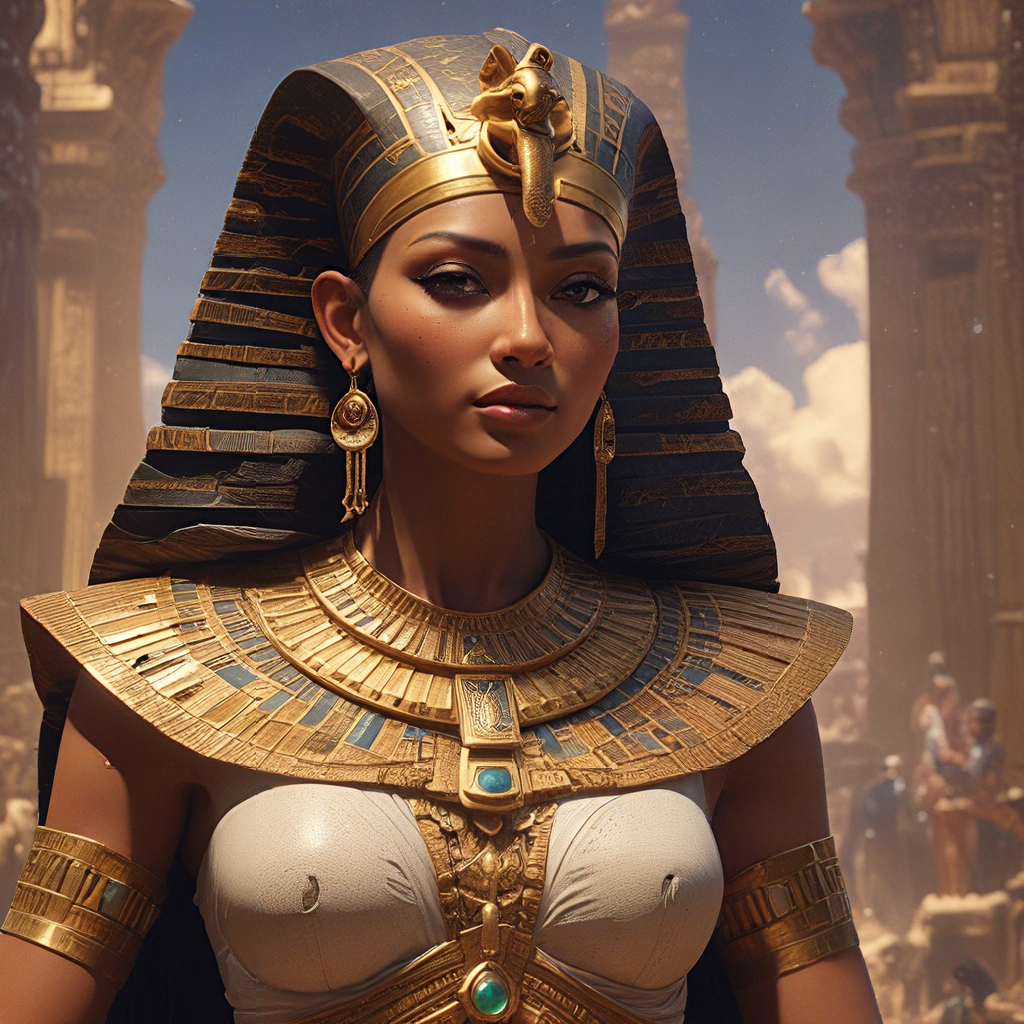The Cosmic Order: A Foundation of Egyptian Mythology
Egyptian mythology is a rich tapestry woven with stories of gods, goddesses, and legendary heroes. At its heart lies a central concept – Ma’at – the divine order that governs the universe. This concept is not just a philosophical idea but a fundamental principle that permeates all aspects of Egyptian life, from creation myths to the afterlife. Understanding Ma’at is key to unlocking the secrets of ancient Egyptian beliefs and practices.
1. Ma’at: The Cosmic Order and Divine Harmony
Ma’at embodies the principles of truth, justice, balance, harmony, and cosmic order. It is the invisible force that holds the universe together, ensuring that everything functions as it should. Imagine Ma’at as a set of scales – on one side, chaos and disorder, and on the other, justice and balance. For the Egyptians, maintaining Ma’at was crucial for a prosperous and stable life. When Ma’at prevailed, life was good. People lived in harmony, and the natural world thrived. But when Ma’at was disrupted, chaos, suffering, and disaster followed.
2. The Role of the Gods in Maintaining Ma’at
The gods and goddesses of Egyptian mythology play vital roles in upholding Ma’at. Each deity is associated with specific aspects of order and balance. For example, Ra, the sun god, represents the light and warmth that sustains life, while Thoth, the god of wisdom and knowledge, ensures that the universe functions according to divine laws. Together, the gods and goddesses work collectively to maintain the delicate balance of Ma’at. They embody the ideal of order and justice, serving as moral exemplars for humans.
3. The Creation Myth: Establishing the Cosmic Order
The Egyptian creation myth, the story of Atum, tells the origin of the universe and the establishment of Ma’at. Atum, the first god, emerged from the primordial waters, Nun, bringing forth the world. As the first being, Atum embodied Ma’at, creating a universe governed by order and justice. From his tears, he created the sun god Ra, who continued the work of establishing Ma’at, bringing light and order to the world. In this myth, the very act of creation is tied to the establishment of Ma’at, emphasizing its fundamental importance in the Egyptian worldview.
4. The Sun God Ra: The Divine Architect of Ma’at
Ra, the sun god, holds a special place in maintaining Ma’at. He is considered the divine architect of the cosmic order, traveling across the sky in his solar barge, ensuring the cyclical journey of the sun, a symbol of life and renewal. Every day, Ra defeats Apophis, the serpent of chaos, who constantly threatens to disrupt Ma’at. This eternal struggle between Ra and Apophis reflects the ongoing battle between order and chaos, a central theme in Egyptian mythology.
5. The Ennead: The Divine Council
The Ennead, a council of nine powerful gods, represents the collective force responsible for maintaining Ma’at. These gods and goddesses, including Ra, Atum, Shu, Tefnut, Geb, Nut, Osiris, Isis, and Seth, collaborate in governing the universe and ensuring balance and harmony. Each god has specific duties and powers, collectively working to maintain the cosmic order. The Ennead serves as a model for social order, as their harmonious interactions reflect the ideal for human society.
6. The Afterlife and Ma’at: The Weighing of the Heart
Ma’at’s influence extends into the afterlife. In the Egyptian concept of the afterlife, the deceased soul faces the Weighing of the Heart ceremony. Here, the heart, believed to be the seat of the soul, is weighed against the feather of Ma’at, a symbol of truth and justice. If the heart is lighter than the feather, the soul is granted entrance into the afterlife, the Field of Reeds, where they enjoy eternal bliss. But if the heart is heavier, it is devoured by Ammit, the devourer of souls, signifying a fate worse than death. The Weighing of the Heart demonstrates the interconnectedness of Ma’at with morality and the pursuit of a just and righteous life.
7. The Impact of Ma’at on Egyptian Society
Ma’at’s influence permeated all aspects of Egyptian society. It shaped social interactions, legal systems, and even artistic expression. The concept of justice demanded ethical behavior, emphasizing compassion, honesty, and respect for others. The idea of balance extended to the construction of temples and monuments, which were meticulously aligned with the stars and the cosmos, reflecting the harmony between the earthly and divine realms. Ma’at was a cornerstone of Egyptian civilization, providing a framework for order, justice, and harmony.
8. The Preservation of Ma’at: The Pharaoh’s Role
The Pharaoh, the earthly king, held a sacred responsibility for maintaining Ma’at. He was considered the embodiment of Horus, the god of kingship, and was believed to be Ra’s son. His role was to uphold justice, protect the people, and ensure the well-being of the kingdom. Through rituals, ceremonies, and laws, the Pharaoh maintained the divine order. He was seen as the intermediary between the gods and humans, ensuring that Ma’at prevailed.
9. The Consequences of Disrupting Ma’at
Disrupting Ma’at was considered a grave offense. The Egyptians believed that any act of injustice, deceit, violence, or chaos threatened the cosmic balance. Such actions could lead to natural disasters, famine, social unrest, and even divine punishment. The individual who broke Ma’at risked losing favor with the gods and facing negative consequences in the afterlife.
10. Exploring the Enduring Importance of Ma’at
Ma’at’s enduring legacy is a testament to its importance in ancient Egyptian beliefs. Its influence extended beyond the realm of mythology, shaping the laws, ethics, and social structures of Egyptian society. Today, Ma’at continues to hold relevance as a powerful symbol of harmony, balance, and justice, serving as a reminder that these principles are essential for a thriving and peaceful society.




